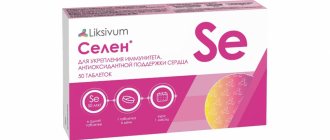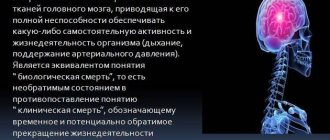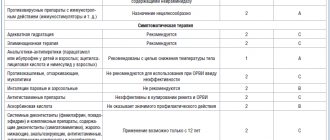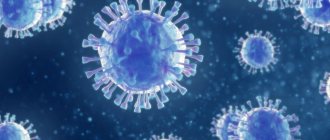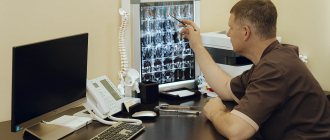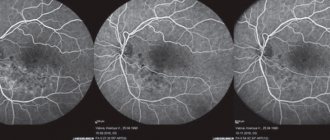There are several types of surgical procedures used to relieve intestinal obstruction, which is a partial or complete blockage of the intestine. Bowel obstruction can be treated with surgical resection, stenting, colostomy, removal of adhesions, or revascularization.
Bowel obstruction can be acute (sudden and rapid) or chronic (slowly worsening) and requires immediate medical attention as it can quickly become life-threatening.
Indications for use
An intestinal obstruction occurs in the small or large intestine, preventing the passage of undigested food and stool. This can cause a number of serious complications, including permanent damage to the intestines, serious fluid and electrolyte imbalances, and bleeding or leakage from the intestines. If left untreated, blood pressure may drop, leading to multiple organ failure and death.
Intestinal obstruction may result from any of the following:
- Mechanical obstruction, which is a blockage inside the lumen (passage) of the small or large intestine, usually due to cancer, inflammatory bowel disease, swelling or infection
- Compression of pressure outside the intestine, usually due to cancer or scar tissue (often the result of previous abdominal surgery or radiation therapy)
- Twisting of the intestine itself, which may be due to scar tissue, muscle disease, or nerve disease
- Myopathy (muscle disease) or neuropathy, which can be congenital or acquired: these conditions can interfere with the proper movement of intestinal muscles, can lead to intestinal collapse, compression of the lumen, or can lead to distorted movements (leading to twisting).
- Ischemic colitis (loss of blood flow to a section of the intestine), usually as a result of a blood clotting defect
The most common cancers responsible for intestinal obstruction include colon cancer, stomach cancer, and ovarian cancer, although any type of metastatic cancer can cause intestinal obstruction in the small or large intestine. Bowel obstructions from colon cancer typically occur in the large intestine (colon).
Consequences of the adhesive process
After treatment, you must monitor your health and follow the doctor’s recommendations. Adhesive processes can recur, therefore, the sooner the patient pays attention to health problems, the greater the chance of eliminating the pathology at an early stage.
Violation of the diet prescribed by the doctor, a sedentary lifestyle, uncontrolled use of medications - all this can provoke new pathological foci.
Recognizing intestinal obstruction
Severe abdominal pain and discomfort are the most recognizable symptoms of an intestinal obstruction, although more subtle signs and symptoms may also occur.
Other symptoms that may occur with intestinal obstruction include:
- Periodic cramps, colic in the abdomen
- Decreased appetite, nausea, vomiting
- Bad breath
- Changes in bowel movements
- Chronic constipation or lack of bowel movements
- Bloating (an unusually expanding appearance)
- Fluid in your stomach
Preoperative testing
If you have symptoms of a bowel obstruction, your doctor will do a physical exam to check your stomach and bowel sounds.
Diagnostic evaluation may include an abdominal x-ray, computed tomography (ultrasound) scan, or ultrasound. These tests may or may not include a barium enema, which involves injecting a small amount of contrast material into the rectum to better visualize the structures.
If you have a blockage, you may also need a sigmoidoscopy or colonoscopy, which are invasive diagnostic procedures in which a camera is inserted into the colon to visualize the blockage.
Lists of permitted and prohibited products
The diet helps reduce inflammation in the gastrointestinal tract, normalize bowel movements, whether diarrhea or constipation, by eliminating certain foods that cause excess bile and digestive enzymes. When compiling a treatment menu, it is recommended to exclude from the diet
:
- rich broths, first courses with pasta and whole grain cereals;
- flour products (only white bread crackers are allowed);
- fatty meat, fish;
- dairy products;
- all legumes;
- vegetables (can only be used for decoctions)
- fresh and dried berries and fruits;
- sparkling water, coffee, strong tea;
- sauces and spices, marinades and canned food, sausages.
Can be included in the menu
:
- soups from lean fish, meat and vegetables;
- wheat crackers (100-200 g per day);
- white meat turkey, rabbit, chicken, lean veal and beef;
- oatmeal, rice and buckwheat (we are talking about pureed cereals);
- cocoa without milk, herbal infusions;
- butter (5 g per meal);
- soups with a slimy consistency, cooked in low-fat meat, fish broth or vegetable broth, with well-cooked cereals, noodles or noodles, the addition of meatballs is allowed.
Breakfast options you can cook
:
- oatmeal (ground) in water with butter, soft-boiled egg;
- oatmeal and boiled chicken in the form of pate with a little butter;
- casserole of buckwheat and fresh (homemade) cottage cheese in breadcrumbs with egg;
- casserole (soufflé) of rice without milk with eggs and butter, crackers;
- steamed chicken cutlets with butter and egg, rice on water.
Lunches
:
- low-fat chicken broth with semolina, grated buckwheat in water, steamed chicken cutlets;
- soup with meatballs and rice, buckwheat with steamed cutlets;
- light broth with rice and chicken soufflé with eggs and butter in the oven, toasted bread;
- steamed fish cutlets, buckwheat porridge, light vegetable broth with semolina;
- steamed turkey cutlets, water rice, turkey fillet broth with breadcrumbs;
- light broth soup with pureed beef and buckwheat, rice with steamed cutlet.
Dinners
:
- steamed omelette;
- buckwheat casserole with egg;
- soufflé made from rice, eggs and chicken;
- baked fish fillet and rice porridge;
- steamed turkey (or fish) cutlets, buckwheat porridge;
- buckwheat porridge and two soft-boiled eggs.
Green tea, coffee, decoctions of rosehip, currant, quince and bird cherry diversify the drinking regime and the vitamin composition of the diet.
Procedure parameters
There are several options for surgical treatment of intestinal obstruction. Surgery is usually urgent, which means you may have surgery within a few hours or a few days after you are diagnosed with a bowel obstruction. Some medications may help with nausea, but they do not prevent bowel obstruction from getting worse or better.
Ideally, you should not eat or drink for about eight to ten hours before this type of surgery, but due to the urgency, preoperative fasting is not always possible. Surgery for bowel obstruction is usually performed under general anesthesia in the operating room.
You may have open surgery with a large incision or minimally invasive surgery with several small incisions and a camera for imaging. It depends on the location, size and cause of the intestinal obstruction. Large tumors or widespread adhesions may require an open procedure, while a small tumor or infection may be treated with minimally invasive surgery.
Treatment options
The main vector of action in the treatment of intestinal adhesions is the return of the normal location and functionality of intestinal loops by separating adhesions and removing severely affected areas.
It is performed surgically - open or laparoscopic methods. Loose adhesions are separated bluntly, while denser and vascularized adhesions are separated using instruments followed by suturing. If an area of the intestine is irreversibly damaged by adhesions, this conglomerate is completely removed, and the wall is sutured with maximum preservation of the anatomical shape. Areas of affected damaged organs may also be excised.
The use of a nasointestinal tube is indispensable in the treatment of intestinal adhesions. The main objective of using this method is to straighten, eliminate obstruction, and restore normal blood circulation in the intestinal wall. The use of a probe accelerates the healing process, stimulates the return of motility and other functional abilities to the affected intestine. The probe is inserted during the operation jointly by the surgeon and the anesthesiologist through the nasopharynx, esophagus, into the stomach cavity, duodenum and directly into the intestine. It causes some discomfort to the patient, but speeds up recovery. Usually placed for 3-5 days. Maximum 7. The decision to withdraw is made by the attending physician based on observation and the results of clinical studies.
Types of surgery for bowel obstruction include:
- Surgical resection : Removal of the obstruction is necessary when a mass such as a tumor is present.
- Removing adhesions : If you have scar tissue compressing the outside of your intestines, it is often necessary to cut them off, although the scar tissue may return.
- Stent placement : A stent, which is a tube that holds the intestine open, may be placed inside the intestine to allow food and stool to pass through and prevent blockages. This may be necessary when bowel obstruction recurs or when the bowel is severely damaged.
- Colostomy/ileostomy : If your intestines are damaged or inflamed, you may need a permanent or temporary ileostomy or colostomy, which is an artificial opening in the abdomen to remove waste or stool. Sometimes these are temporary structures needed to prevent a severe gastrointestinal infection from spreading throughout the body. However, it is possible that the ends of the intestine cannot be reconnected and these openings may be required for a long time.
- Revascularization . Ischemic colitis may require revascularization, which is the repair of blocked blood vessels that supply blood to the intestines.
Classification
Intestinal adhesions are classified according to the degree of strength and some morphological characteristics. The scale for assessing the severity of the adhesive process is as follows:
- 0 points - no adhesions;
- 1 point - single fusion, membranous structure, without narrowing of the intestinal lumen (divided in a blunt manner);
- 2 points - two adhesions of a loose structure without blood vessels. The intestinal tube is moderately deformed, the lumen is not narrowed (divided in a blunt way, in rare cases sharp);
- 3 points - more than two adhesions. Dense, can grow blood vessels. The intestine is deformed, the lumen is narrowed to 50% (divided only by acute means);
- 4 points - conglomerate of adhesions. They are dense, permeated with blood vessels. The deformation of the intestinal tube is extensive, the lumen is narrowed by more than 50% (they are separated only by an acute method, it is difficult to avoid trauma to the fused organ).
Recovery after intestinal surgery
After surgery for a bowel obstruction, your stomach and intestines will need time to return to normal activity and heal. You may not be allowed to eat right away. Your diet will be gradual, from liquids to soft and bulkier foods.
You may need pain medication for the first week after the procedure. Some medications, such as opioids, can interfere with healing, causing severe constipation and are therefore used with caution. Nonsteroidal anti-inflammatory drugs may cause bleeding in the stomach or intestines. Typically, pain medications are carefully administered and monitored after surgery for bowel obstruction, and intravenous fentanyl, panadol, or methadone are some common methods of pain management.
As you change your diet, you may also need an x-ray of your abdomen to confirm that you are being treated and that there is no blockage left. During this time, you will need intravenous fluids to maintain hydration and nutrition. As your diet changes, you should begin to have small bowel movements, and you can expect normal bowel movements once you start eating solid foods.
Full recovery may take several weeks to several months. It is not easy to predict how long you will need to recover as it depends on how well you tolerate fluids and solids rather than the type of surgery. However, the surgery involves removing a large section of the colon and may take some time to recover from.
Dietary recipes
Chia pudding
To prepare you will need
:
- 4 tbsp. chia seeds
- 150 ml coconut milk
- fresh or frozen berries to taste
We recommend
“Metabolism: foods to speed up metabolism and lose weight” Read more
In the evening, pour the chia seeds with coconut milk in a separate container and mix well. Cover with a lid and place in the refrigerator overnight. In the morning, take out the pudding and stir, remove and wash the berries, grind in a blender. Place the pudding in a bowl/glass/deep container in layers: 1 layer berry puree, 2 layer chia. And so on until the ingredients run out. You can decorate the top with a mint leaf.
Buckwheat with coconut milk with berries and vanilla
To prepare you will need
:
- 30 grams of buckwheat
- 200 ml coconut milk
- 1 handful of berries (fresh or frozen)
- vanilla to taste
Rinse the buckwheat, add 150 ml of water and cook for 10 minutes. After the time has passed, add coconut milk, spices and berries and cook for another 5 minutes.
Rice porridge with pumpkin
To prepare you will need
:
- 70 g pumpkin
- 100 ml water
- 50 ml coconut milk
- 2 tbsp. rice
- 5 g butter
- 1 tsp poppy
- 20 g walnuts
- salt
Rinse the rice and soak in water for 15 minutes. Mix water, milk and put on low heat, add salt. Add rice, poppy seeds and stirring, cook over low heat for 7-10 minutes. Peel the pumpkin, cut and grate. Add to the porridge, cook the rice and pumpkin for another 5 minutes, stirring. Turn off the porridge, add butter. Add walnuts to the porridge. Cover with a lid and let stand for another 5 minutes.
Creamy risotto with chicken fillet and vegetables
To prepare you will need
:
- 150 g Risotto rice
- 200 g chicken fillet
- 1 tbsp. ghee
- 1 piece bell pepper
- green onions
- 1 piece carrot
- 100 ml coconut cream
- salt/pepper to taste
We recommend
“Vitamins for veins and blood vessels: nutritional rules for maintaining health” Read more
Wash, clean and cut the chicken fillet into cubes. Fry in ghee for 5-7 minutes. Wash, peel, chop the vegetables, add to the chicken and fry for another 7 minutes. Wash the rice, add to the vegetables and chicken, add salt/pepper and fill with water 2 fingers above the rice. Leave to cook over medium heat until done. Turn off the heat, add coconut cream, stir.
Cod soup
To prepare you will need
:
- 500 g cod fillet
- half a small zucchini
- 5 small potatoes
- 1 medium sized carrot
- salt to taste
All of the vegetables listed must be peeled and washed thoroughly. Cut the zucchini into thin strips and the potatoes into small cubes. Grate the carrots on a coarse grater. Next, you need to boil 1.5 liters of water and add chopped potatoes to it. After the water boils again, you need to reduce the heat, add the fish fillet, previously washed and cut into cubes. As the soup boils, you need to carefully remove the resulting foam. When the broth boils, add chopped zucchini and grated carrots, 1 tablespoon of sunflower oil and salt to taste. After this, reduce the heat and cook the soup for 20 minutes. Cover the finished dish with a lid and leave for half an hour.
Pumpkin Coconut Curry
To prepare you will need
:
- 1 tbsp. coconut oil
- 1 tbsp. grated fresh ginger
- 1 red bell pepper
- 200 g pumpkin
- 3 tbsp. tomato paste
- 1 tsp curry powder
- ½ tsp. turmeric
- 250 ml coconut milk
- 1 tbsp. lemon juice
- salt/pepper to taste
Wash, peel and chop the vegetables. Heat coconut oil in a frying pan, add vegetables and simmer for 15 minutes. Add milk, tomato paste, spices and simmer until the pumpkin is ready (soft). You can serve with greens and pumpkin seeds.
Cabbage pie with chicken fillet
To prepare you will need
:
- 300 g fresh cabbage
- 200 g chicken fillet
- 1 carrot
- 2 eggs
- 30 g walnuts
- herbs: dill, basil, thyme
- spices, salt, pepper
- 1 tbsp. ghee
Wash the fillet and cut into cubes. Fry in a preheated frying pan for 5-7 minutes. Wash, peel and cut vegetables as desired. Fry with the chicken for another 7 minutes. At this time, beat the eggs with a fork or whisk in a separate bowl. Add spices, salt, pepper to taste, herbs. Stir. Take a baking dish and place the chicken fillet and vegetables in it and fill it with the egg mixture. Sprinkle chopped walnuts on top. Place in a preheated oven at 180 degrees for 25-30 minutes.

